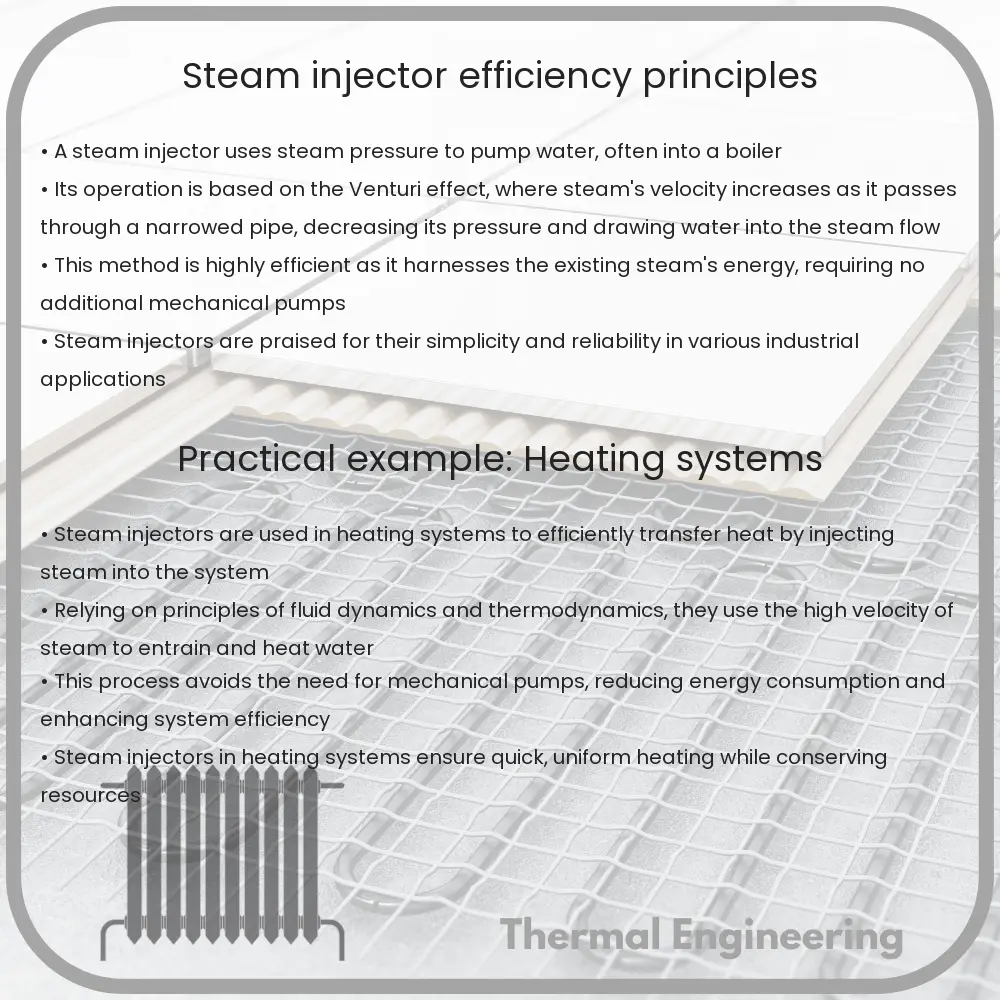Learn about the steam injector, a key device in steam engineering, used for its simplicity and efficiency in feeding water into steam boilers.

Understanding the Steam Injector: Principles and Efficiency
The steam injector is a fascinating device used primarily in steam boilers to feed water, leveraging the high-pressure steam from the boiler itself. The beauty of a steam injector lies in its simplicity and efficiency, making it an essential component in steam engineering. In this article, we explore the operating principles of a steam injector and examine its efficiency.
How Does a Steam Injector Work?
The core principle behind a steam injector is based on the Bernoulli’s Principle and the Venturi effect. The operation of a steam injector can be divided into three key stages: initial induction, compression, and delivery. Here’s a step-by-step breakdown:
- Initial Induction: The injector uses steam from the boiler and passes it through a converging nozzle. The steam exits the nozzle at high velocity, creating a low-pressure area that sucks in the surrounding water.
- Compression: The high-speed steam then mixes with the feed water in the combining tube. The mixture of water and steam condenses the steam into water, dramatically increasing the mixture’s pressure due to the conservation of momentum and mass continuity.
- Delivery: Finally, the compressed mixture passes through a diverging section, slowing down the mixture but increasing pressure further, allowing it to overcome the boiler pressure and flow into the boiler.
The injector not only uses the energy of the steam efficiently but also recycles the steam’s thermal energy by using it to heat the boiler water, which increases the overall efficiency of the system.
Efficiency of Steam Injectors
Steam injectors are known for their substantial efficiency and simplicity. The efficiency of a steam injector primarily depends on three factors:
- Steam Pressure: Higher boiler steam pressures generally improve the operational efficiency of the injector, as higher pressure steam possesses more kinetic energy that can be transferred to the water.
- Water Temperature: The temperature of the feed water also affects efficiency. Colder water can reduce the overall efficiency since more steam is required to heat and mix with the colder water, which might lead to higher condensation and less efficient momentum transfer.
- Nozzle Design: The design and condition of the nozzles (the converging and the diverging parts) play a crucial role. Properly designed nozzles ensure optimal conversion of steam’s kinetic energy into pressure energy.
The overall efficiency of a steam injector can be as high as 60% under optimal conditions. However, it is crucial to maintain and operate the injector within recommended parameters to achieve such efficiency levels.
Applications and Importance
Steam injectors are not only used in steam boilers but also find applications in various industries, including chemical processing, thermocompression, and in locomotives, particularly in heritage and steam-powered vehicles. Their ability to transfer heat and mass without moving parts or the need for external power makes them an enduring solution for efficient steam management.
In conclusion, the steam injector exemplifies an elegant engineering solution that combines the principles of fluid dynamics and thermodynamics to achieve high efficiency. Its straightforward design belies its sophisticated operation, making it a standout example of effective mechanical engineering.